How confident is your audience targeting? With consumers overwhelmed with advertising white noise and more concerned about privacy and data collection, brands must go above and beyond to reach only the right people at key moments within complex customer journeys.
Sorting through the variables can sometimes feel like grasping around in the dark. While analysis can shine some light, it takes expert direction to know where to look and how to turn the necessary data into actionable insights. Executives worldwide are concerned about their audience strategy as the identity landscape shifts, working to further efficiencies and maximize return on spend.
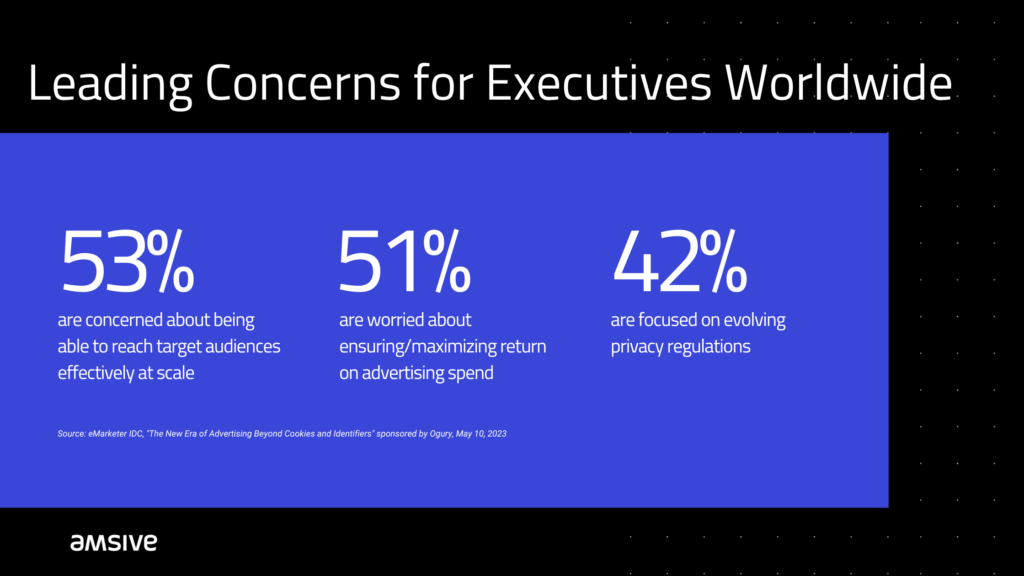
Advanced segmentation strategies help marketers rise to meet this challenge. While there’s a range of “segmentation” definitions, segmentation that moves the needle for your business is based on deep consumer insights and advanced data science techniques. It prioritizes and categorizes your highest-value audiences so you can take strategic action throughout the complex consumer journey of the privacy-first future.
Dive into advanced audience segmentation. Understand how to measure your current segmentation strategy against some of the industry’s best. And feel confident in preparing your marketing strategy for 2024 and beyond.
Jump To:
What is audience segmentation?
Audience segmentation identifies the subgroups within a target audience so businesses can tailor more personalized messaging and build stronger connections and relationships with customers and clients. When you use audience segmentation to create a customized message for your specific audience, you’re more likely to increase conversion rates, attract more leads, and win customer loyalty. Table stakes in today’s marketing landscape.
In fact, 80% of audiences tend to do business with a brand that personalizes their experience. This illustrates that customers enjoy and appreciate receiving messaging they feel was created specifically for them, and they’re more likely to be interested in what you have to say.
Advanced segmentation turns up the dial, tackling efficient spend management head-on. Hyper-targeted on only your highest value individuals and households that are (or are ready to be) primed for action.
Types of audience segmentation
Here are five main types of audience segmentation that are often used within marketing strategies:
#1. Demographic segmentation: This segmentation groups people according to demographic similarities. With this type of segmentation, businesses can focus on a specific demographic group and market their products and services accordingly. Companies that aren’t segmenting their audience by demographic are wasting time and money by marketing to people without use for their products or services.
#2. Behavioral segmentation: Additionally, behavioral segmentation involves people’s purchasing decisions and online buying behaviors. Four types of behavioral segmentation include purchase behavior, occasion/timing, benefits sought, and customer loyalty. Behavioral segmentation gives businesses a fuller picture of their audience, allowing them to tailor products or services to specific needs.
#3. Geographic segmentation: Geographic segmentation is relevant for many businesses as well. Whether expanding into new markets or identifying untapped prospects within your usual locales, a complete view of your best customers’ geographic landscape is important for every business.
#4. Psychographic segmentation: This segmentation takes into further consumer analysis, including affinities. Affinity audiences are people who have a specific passion. Say you’re looking to market a new line of camping gear; your affinity audience would be “outdoor enthusiasts” or “hikers.” With this information, marketers can create targeted campaigns that speak directly to a specific audience with specific tastes and interests.
#5. Firmographic segmentation: Segmentation by business information is also a well-established tactic for marketers to learn even more about their best audience.
How can brands harness these types of segmentation and more to deliver ROI from highly performant marketing? First, with a complete picture of the people and businesses who make up their best prospects and customers as businesses transition to hyper-personalization.
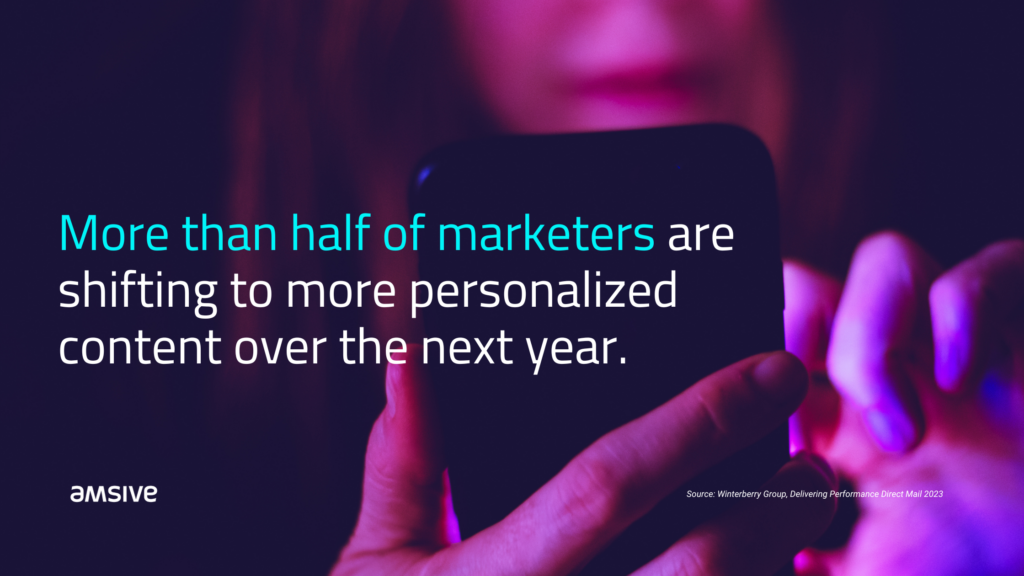
What makes an ideal individual prospect to target? They are trackable, individually identifiable, high margin, and can have known specifics such as channel preferences, attitudes, behaviors, etc.
Many data companies and agencies offer audience segmentation, but not all segmentation strategies are the same, which can lead to varying results. Traditional segmentation poses challenges, such as using small qualitative samples, which can lead to inaccurate personas and targeting; overly broad demographics through other audience segmentation products only segment at the household level, missing key individual differences.
Our team at Amsive defines advanced audience segmentation as deeper, unprecedented insights into your highest-value audience segments—known audiences of real people who can drive growth as your next best customer.
Taking your audience segmentation to the next level
Advanced segmentation extrapolates ideal prospects hidden within vague personas and eliminates the types of reach that misuse your ad dollars. Eliminate waste with hyper-targeting and personalization, focusing on the correct audience that can create major efficiencies.
The benefits include the following.
Better Response Rates: When you create a message tailored specifically to a person’s passions or interests, they’re much more likely to engage and respond. So much so that 88% of users agree they are more likely to respond to an email favorably if it looks like it’s been specifically created for them.
Less Wasted Ad Spend: Without a targeted audience, advertising dollars are thrown into the wind. But when you precisely know your target audience, concise campaigns can be crafted for that specific group, meaning your message isn’t falling on deaf ears, and you’re not wasting money on people who aren’t primed to convert.
Higher Conversion Rates: Reaching an interested audience segment increases a company’s chances of converting sales.
Decreased Negative Feedback: People don’t like receiving messages they are not interested in. When they receive those messages, they grow tired or worse. All of that is eliminated by reaching out only to people interested in your products or services.
Reduced Customer Churn: When you segment your audience, you can focus your marketing efforts on your highest-value customers who truly move your business. And doing that increases your customers’ sense of value and community, growing lifetime value.
With actionable, accurate, and continually optimized analytics, advanced segmentation delivers outsized results.
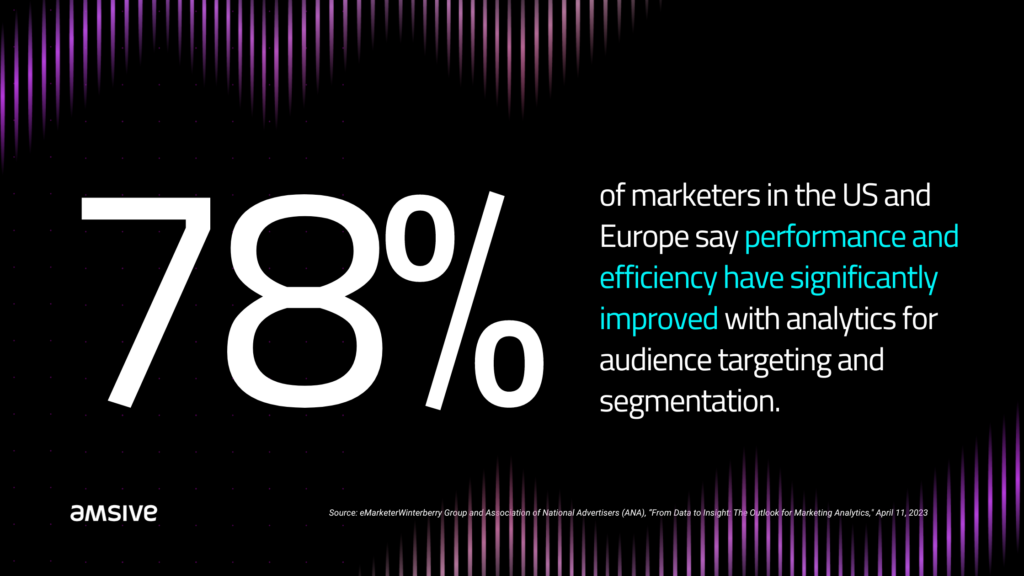
How advanced audience segmentation enhances inbound marketing efforts
Advanced segmentation and hyper-personalization improve your overall customer experience in a way that’s most efficient for your business.
Hyper-personalization and advanced segmentation are key building blocks to staying ahead of the privacy-first marketing curve. Creative, content, messaging, and campaigns are only as powerful as the audience strategy, delivering them to the right individuals and businesses. Direct communication with the right consumers in pivotal moments within their hybrid consumer journeys increases engagement and conversion, improving the efficiency of your media budget and scaling ROI.
Audience insights gleaned from in-depth consumer intelligence and segment analysis offer businesses a clear picture of the people who can best power brand growth. Let a deeper understanding of your audience power brand communications, sharing which types of people prefer hearing from product experts instead of your sales team, or how introducing direct mail into digitally-native businesses can be the right move further to increase interest and conversion within your highest value audiences.
How to advance your audience segmentation
How often are you auditing your segmentation strategy? It’s important to continually review and optimize your audience segments, scaling the efficacy of results over time. Here are some steps to take:
#1. Conduct Audience Analysis and Review Information: An audience analysis is a key step in further identifying audience segments. A complete audience analysis delves into consumer intelligence and any available first-party data, solidifying the strategy for your marketing messages and materials. Once compiled, this information should be reviewed to determine how to uplevel your audience segmentation.
#2. To Segment or Not to Segment? Advanced segmentation strategies categorize and prioritize your highest-value audiences. Data science expertise helps brands identify crucial signals that offer insight into optimizing your segmentation strategy. Knowing when to flag another key set of your audience means sorting through layers of data variables, which highly specialized teams of data scientists can extrapolate.
#3. Decide on Criteria for Segmentation: If you decide to segment your audience, determine what criteria will create the segmentation. Start by looking at the main audience, then find the characteristics that differentiate one subgroup from other members of the overall audience. The differentiating factors to strongly consider are those that require your business to create an entirely separate message or approach to reach certain subgroups.
#4. Get Segmenting: Once you’ve identified the audience criteria, segment them into more specific groups. Here are a few important tips to remember when determining how to segment your audience:
- Weigh stable segments, such as demographic, firmographic, geographic, and technographic, and less stable, such as behavioral and psychographic segment data frequently changes.
- Create each segment from your existing products or services so they can be profitable.
- Combine several customer segments where it makes sense. Doing so opens the doors for your brand to be more inclusive and diverse while providing opportunities to improve your products or services for your target audience.
There are several ways to go about audience segmentation, though it’s important to remember that each customer segment should align with your marketing and sales strategies. Some tools include:
- An audience segmentation table, where you list the primary audiences chosen during your audience analysis in one column, then identify potential segments for each audience based on the criteria you decided on.
- A market segmentation tree, where you start with a potential audience and divide it by important differences.
- Harnessing AI to enhance customer segments can save valuable resources when used in tandem with specialist teams.
When you begin to analyze your segmentation, look to employ some of the following strategies to ensure you have the right resources allocated to segmentation.
How to analyze audience segments
Once you’ve established your audience segments, review them occasionally to make sure they’re helping your business. The feedback you receive from customer/audience segment analysis makes it a useful exercise (and not as time-consuming as actual audience segmentation) with many potential benefits, such as:
- Better brand awareness
- More efficient processes
- Improved customer relationships
- The ability to offer new products and services
- Better product delivery
- Keeping a step ahead of your competition
Here are some strategies on how to optimally analyze your audience segments.
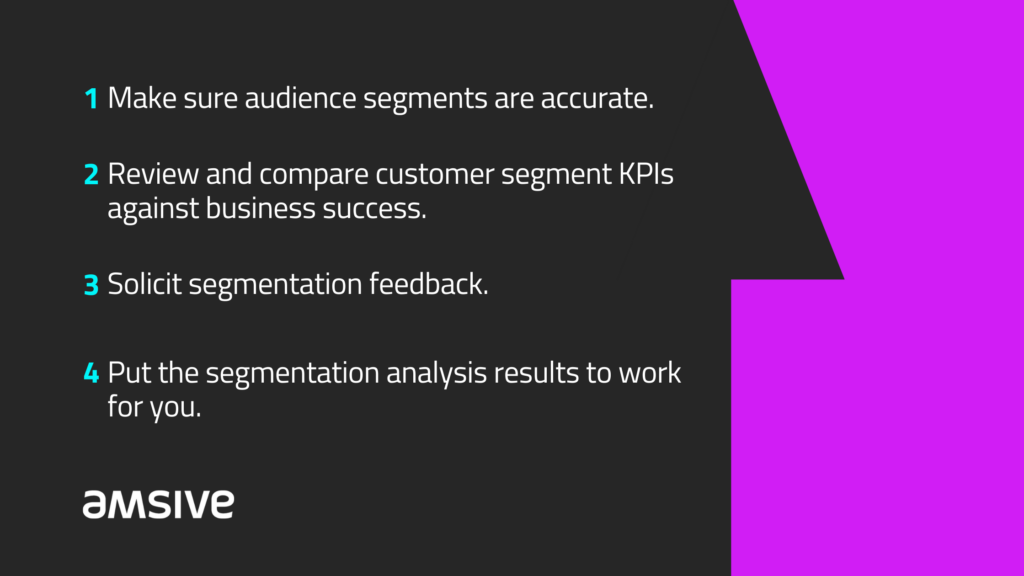
#1. Make sure audience segments are accurate. Businesses change gears frequently. And those changes filter all the way down to audience segmentation. If your company makes a change to pricing, products, and even software, the segmentation data can change along with it. Staying on top of your segmentation data is critical, so make a habit of doing so from time to time.
#2. Review and compare customer segment KPIs against business success. When you establish key performance indicators (KPIs) for each audience segment, you can then review them and compare how each segment is performing relative to the overall performance of your business. As you’re employing this strategy, it’s a good idea to monitor segment changes for cultural shifts that might impact audience demographics. By staying on top of these shifts and current events, your company can react quickly to changing customer expectations.
#3. Solicit segmentation feedback. Putting the time and effort into audience segmentation only pays off if the data is used correctly. Before you analyze your segments, bring internal stakeholders on board for the analysis. Doing so can help your team factor in any company-wide changes that may impact customer segments. Effective ways to obtain internal feedback include email surveys, focus groups or task forces, or simply open dialogue on the subject. A solid segmentation feedback strategy will complement internal feedback with customer opinions, which you can accomplish through surveys, live chats, website feedback forms, customer outreach, and social monitoring.
#4. Put the segmentation analysis results to work for you. Now that you have your feedback and updated your audience segmentation accordingly, it’s time to activate those updates. This might involve realigning marketing and sales plans with the new customer expectations you discovered during segmentation analysis.
What does successful audience segmentation look like?
How do you know if your audience segmentation is working? Metrics and measurements, such as segment engagement, segment profitability, segment size and growth, and segment loyalty, can obviously help determine whether it is. But businesses should look beyond the metrics for other telltale signs.
Your segments are always changing
Your segmentation is working if the data from your segmented marketing campaigns leads to new strategies that involve even more specific audience segments. What you want to see from each campaign is new insights into your audience that result in modifications to your customer segments. Yes, it’s a constantly evolving cycle, but it ultimately leads to more effective segmentation. For example, if your marketing campaign uses ads, you can further segment your audience by splitting your already-segmented audience into a new subset of segments–those who did not engage with the ads, those who did engage but did not provide further information, and those who submitted information with the expectation of being contacted. All of these smaller segments can inform future marketing campaigns.
Engagement and target audience size move in opposite directions
This speaks directly to the effectiveness of audience segmentation. By narrowing the size of your target audience to those who, based on your data, have an interest in your product or service, you’re growing your company’s engagement numbers. Yes, you’re now marketing to a more limited audience size within this target, but you’re reaching the right people and increasing efficiency. Scaling your audience can then be more accurate through further expansion, additional segmentation, and more. By eliminating those who don’t value or need your products and services, you’re spending your advertising budget efficiently and responsibly, which will likely lead to higher engagement and increased conversions. The bottom line? Segmenting your audience lets you reach only the prospects most likely to engage with your message, allowing you to continue to focus on scaling known and highest-value audiences universally.
If your business is not seeing similar results from its marketing and advertising campaigns, it’s time to segment. Knowing what a successful segmented campaign looks like, you can apply these strategies and solutions to guide a deeper and more thoughtful data-driven strategy.
How AI can supercharge audience segmentation
Harnessing artificial intelligence can assist businesses with audience segmentation thanks to its ability to process vast amounts of information and identify specific trends and patterns that may otherwise go unnoticed. When AI powers customer segmentation, businesses get a much deeper look into audience data, which allows marketing teams to sharpen further targeting strategies and personalize messages like never before. And, of course, correctly utilizing AI improves efficiency, saving resources and time while allowing businesses to pivot quickly from one strategy to another based on real-time findings.
Advanced audience segmentation is just one way that brands are positioning themselves for the privacy-first future of marketing. But there’s so much more to learn. Download our latest report The Future of Audience Solutions: Privacy-First Marketing in the Post-Cookie Era to inform your 2024 planning.
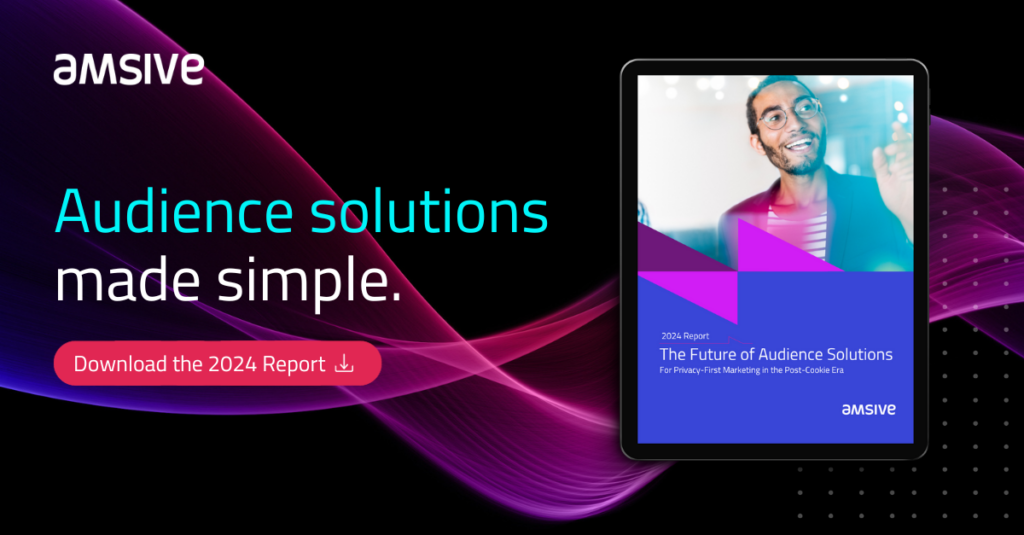
Advanced audience segmentation is critical for brands to cut through the noise and connect with their most valuable customers in our crowded digital landscape. By leveraging advanced data science techniques and AI, marketers can develop deep insights into real individuals primed for action. This hyper-targeted approach eliminates waste, drives better response and conversion rates, and builds lasting retention and loyalty. To stay ahead in today’s privacy-first era, savvy brands will continually optimize their segmentation, analyze performance, and activate their insights through tailored messaging and experiences. With privacy and personalization top of mind, advanced segmentation strategies will be key to efficiently engaging each customer throughout their unique journey.
Advancing your audience segmentation strategy is just one crucial part of a data-driven, performance-based strategy, equipping you with the power to optimize your SEO efforts effectively. Dive deeper into applying first-party data and customer models to publisher audiences, or let’s talk about how to leverage these insights for your marketing efforts — and elevate your business.






